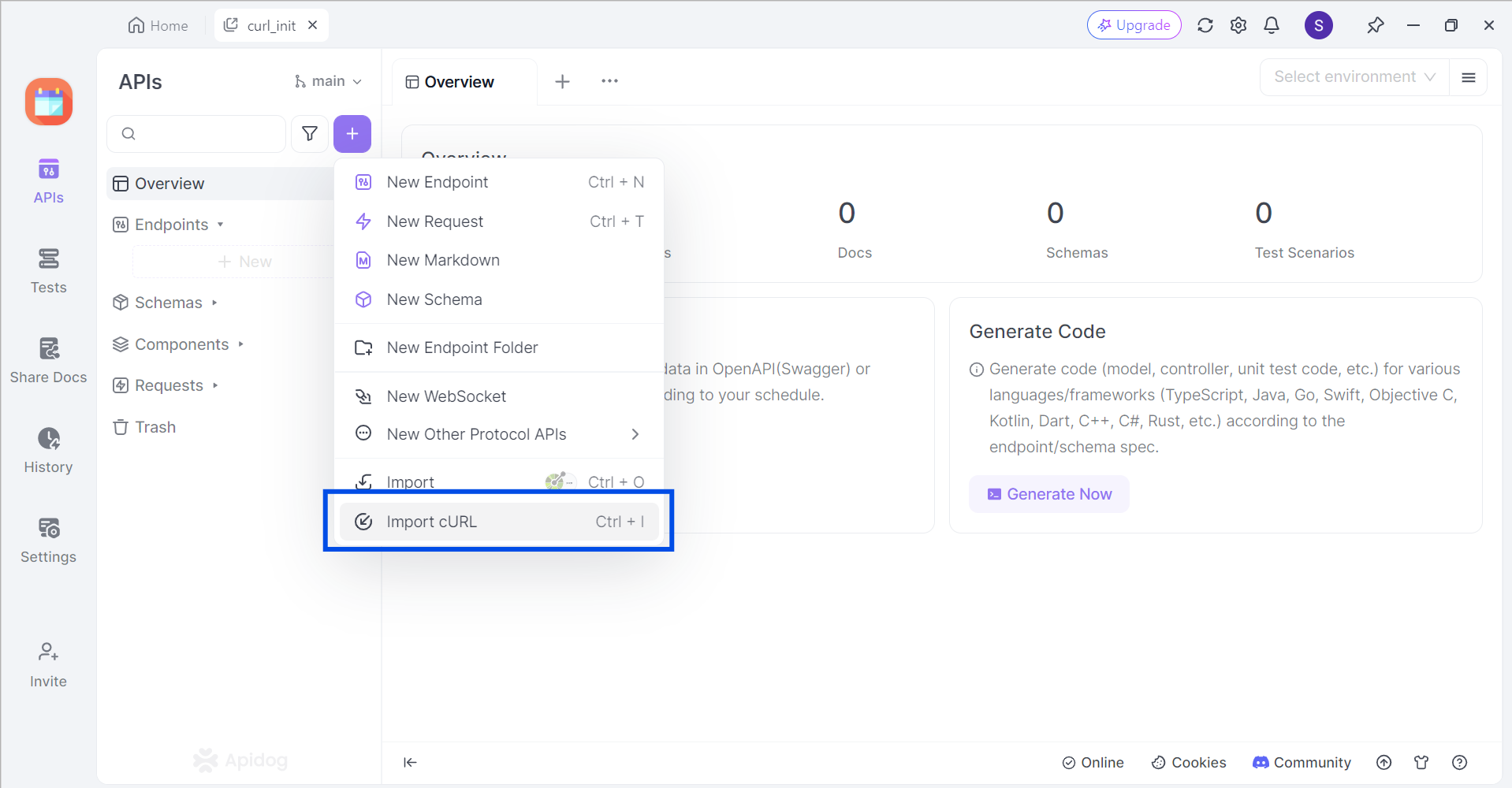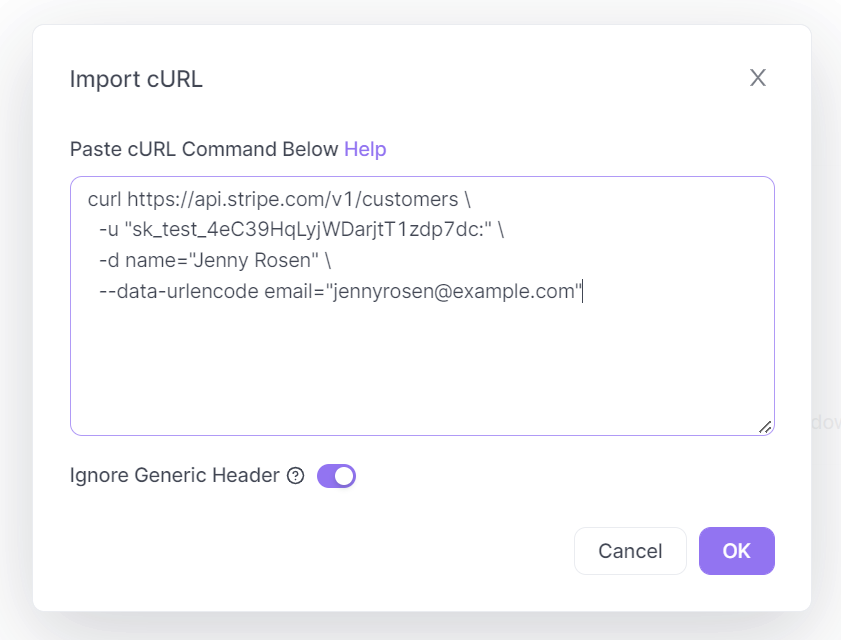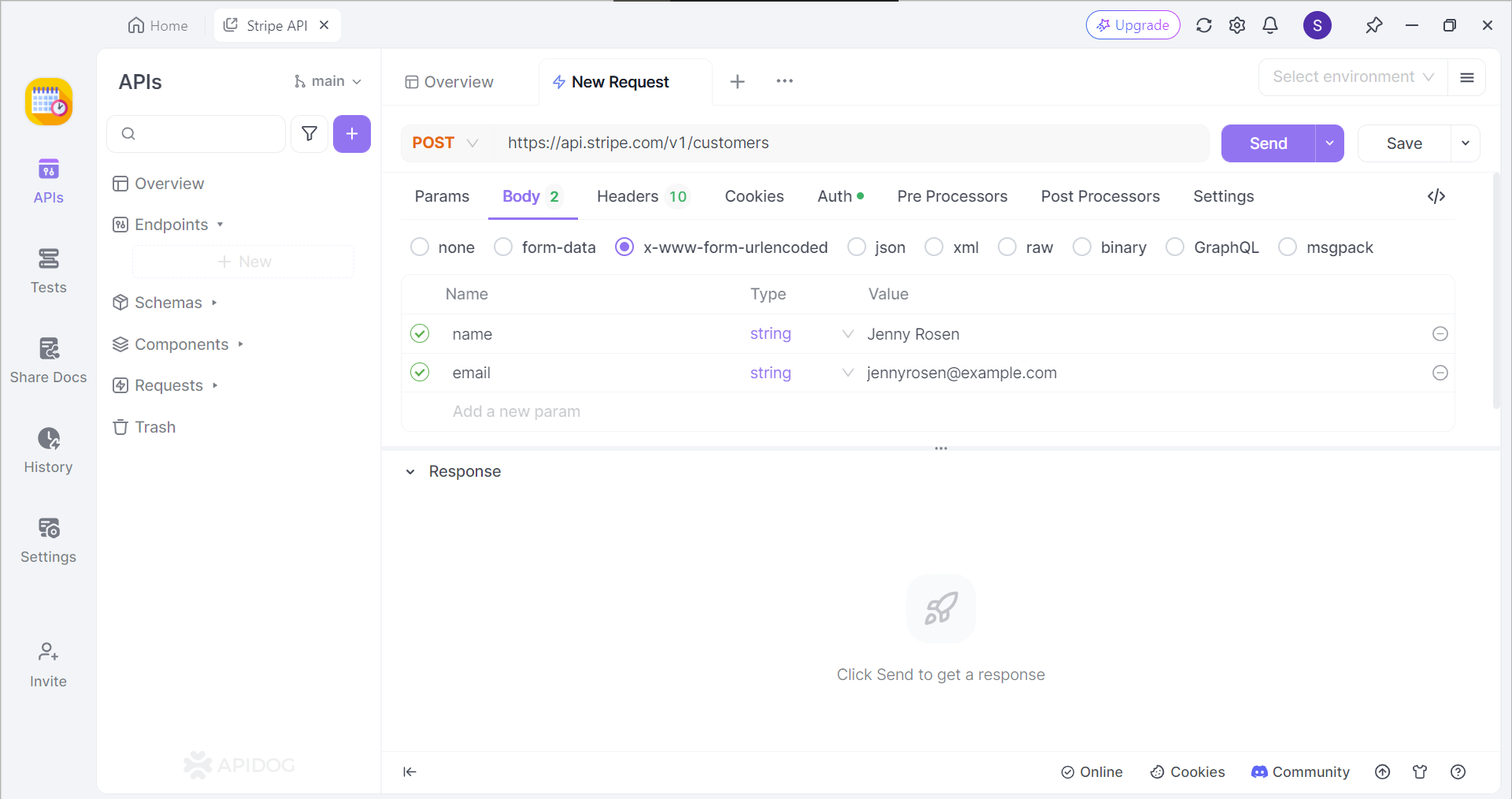The client-server interaction involves an exchange of information. While users typically focus on the content delivered by a web server, the initial response includes crucial metadata packaged within the header.
With Apidog, you can build, test, mock, and document APIs within a single application. So, what are you waiting for? Quickly streamline your development by clicking the button below!

This header section holds valuable details about the requested resource, such as its content type, size, and modification date. The cURL utility offers a powerful tool for extracting this header information without downloading the entire content: the HEAD request.
To prevent confusion, we shall first define the terms "cURL" and "HEAD request" respectively.
What is cURL?
cURL, short for "client URL," is a multifaceted software project encompassing two key components:
cURL Command-line Tool
This is the user-facing interface you interact with in your terminal. It allows you to send and receive data using various network protocols, most commonly HTTP (websites) and HTTPS (secure websites). Think of it as a way to give specific instructions to a server on what you want it to do.
libcurl Development Library
This is the workhorse behind the scenes. It's a software library that programmers can integrate into their applications to enable those applications to transfer data using the same protocols as the curl tool. So, even if you don't directly use the curl command line, you might be benefiting from libcurl's functionality in various software you use.
cURL's Notable Features
Protocol Support
It's a champion of communication, supporting a wide range of protocols beyond HTTP/HTTPS, including FTP (file transfer), SMTP (email), and even protocols for niche uses.
Flexibility
The curl command offers a rich set of options to tailor your requests. You can specify things like authentication methods, data transfer modes, output formatting, and progress monitoring.
Cross-Platform
cURL is available on virtually every operating system, making it a ubiquitous tool for developers and system administrators alike.
What is a HEAD Request?
A HEAD request is a specific HTTP method that functions very similarly to a GET request, with one crucial difference: the server omits the response body in its reply. The HEAD request fetches only the header information from the server's response.
A HEAD request is usually used to obtain the metadata stored within the header section, such as:
Content-Type
This specifies the type of content being served, such as HTML, image (JPEG, PNG), or PDF.
Content-Length
This reveals the size of the resource in bytes, allowing you to estimate download times or manage storage space.
Last-Modified
This indicates the date and time the resource was last changed on the server.
Common Use Cases of HEAD Requests
Checking Resource Availability
A HEAD request can confirm if a specific URL points to a valid resource. The server's response code (e.g., 200 for success, 404 for not found) tells you if the resource exists.
Conditional Downloads
If you have a locally cached copy of a resource, a HEAD request can compare the Last-Modified header with your cached version. This helps determine if you need to download a newer version.
Optimizing Downloads
Knowing the content length beforehand allows you to prioritize downloads or manage bandwidth limitations.
Debugging & Script Automation
HEAD requests can be used to verify server responses and troubleshoot website functionality during development or within automated scripts.
Code Examples of cURL HEAD Requests
Here are three code examples of cURL HEAD requests that you can refer to if needed.
Example 1 - Basic HEAD Request
This is the simplest example of sending a HEAD request to a specific URL.
curl -I https://www.example.com
Example 2 - Checking Resource Availability with Response Code
This example checks if a resource exists by looking at the response code.
curl -I -o /dev/null https://www.example.com/images/banner.jpg
Code Explanation:
Here,-o /dev/null discards the response body (since we only care about headers). The response code will be displayed, indicating success (200) or an error (e.g., 404 Not Found).
Example 3 - Conditional Download with Last-Modified Header
This example checks if a local file needs updating based on the server's Last-Modified header.
local_file_date=$(stat -c %y my_file.txt)
curl -I -s https://www.example.com/files/my_file.txt | grep Last-Modified: | cut -d':' -f2- | tr -d '\r' | awk '{print $1,$2,$3,$4,$5,$6}' | cmp - $local_file_date
Code Explanation:
stat -c %y my_file.txtgets the last modification date of the local file.curl -I -sretrieves headers silently.- We filter the Last-Modified header and format it.
cmpcompares the server's date with the local file's date.- If the dates differ, a message indicating an update is needed will be displayed.
Apidog - Import cURL Commands in a Few Seconds
Apidog is a comprehensive API development tool that provides the functionalities for developers to import existing cURL commands into readable API requests on a beautiful user interface!

Let's see how you can quickly import cURL over to Apidog!
Import and Edit cURL APIs with Apidog

Apidog supports users who wish to import cURL commands to Apidog. In an empty project, click the purple + button around the top left portion of the Apidog window, and select Import cURL.

Copy and paste the cURL command into the box displayed on your screen.

If successful, you should now be able to view the cURL command in the form of an API request.
Generate PHP Code for cURL API with Apidog
If you do not have prior experience coding in the PHP programming language, fear not! Apidog has a code generation feature that you can rely on, providing you with code frameworks for multiple other programming languages.

First, locate the </> Generate Code button on any API or request, and select Generate Client Code on the drop-down list.

Next, select PHP, and find the cURL section. You should now see the generated code for cURL. All you have to do is copy and paste it to your IDE (Integrated Development Environment) and continue developing your application.
Conclusion
cURL's HEAD request serves as a valuable tool for interacting with web servers in a targeted way. By fetching only the header information, it allows you to glean crucial details about resources without the burden of downloading entire files.
This efficiency proves beneficial in various scenarios, from checking resource availability and optimizing downloads to streamlining development workflows and crafting automated scripts. As you explore the capabilities of cURL and HEAD requests, you'll discover a powerful method for gaining insights into the intricate workings of the web.



